Resources About Emergencies and Indoor Air Quality
On this page:
On other pages:
Flood Cleanup and Indoor Air Quality
Flood water can make the air in your home unhealthy. This is because when things remain wet for more than two days, they usually get moldy. Inhaling mold can cause adverse health effects, including allergic reactions. Mold also can damage materials in your home. In addition, flood water may contain microorganisms, such as bacteria, or chemicals which may affect your health.
In this section:
- Flood Publications Resource One-Pager
- Flood Cleanup Infographic
- Flooded Homes Cleanup Guidance
- Flood Cleanup - Protecting Indoor Air Quality
- Hazards in a Flooded Home
- Homeowner's and Renter's Guide to Mold Cleanup after Disasters
- Flood Cleanup and the Air in Your Home Booklet
- Technical Resources for Flood Cleanup and IAQ
- Flood-related Video Recordings
- Flood-Damaged Homes: Approaches to Effective Decontamination, Cleaning and Drying
Presented by Dr. Gene Cole - Flood Cleanup Webinar
Presented by Dr. Gene Cole
- Flood-Damaged Homes: Approaches to Effective Decontamination, Cleaning and Drying
Flood Publications Resource One Pager
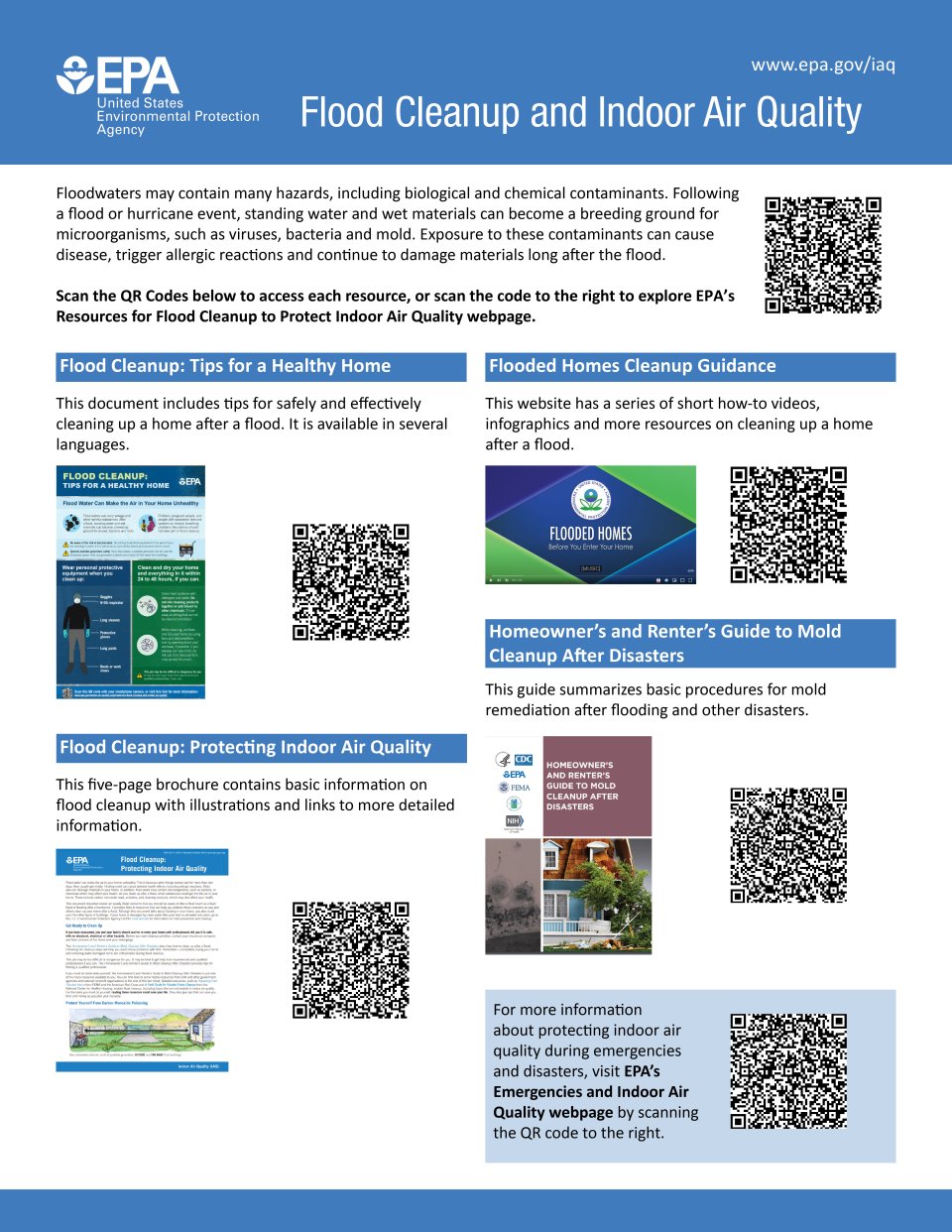
This one-pager has QR codes to several flood cleanup resources – including guidance for homeowners and renters to better understand how to safely and effectively cleanup after a flood. Emergency management and public health professionals can easily share these resources digitally. Simply scan the QR codes to access the resources.
Resources for Flood Cleanup and Indoor Air Quality (PDF) | En Español
Flood Cleanup Infographic
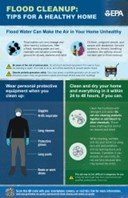
This downloadable and printable PDF resource provides information on how to clean up after a flood and how to prevent indoor air problems with helpful illustrations.
The infographic is available in color, grayscale and text versions.
Flooded Homes Cleanup Guidance

EPA’s Flooded Homes Cleanup Guidance provides a complete guide to cleaning up a home after a flood, including a series of brief how-to videos, infographics, and more.
Flood Cleanup - Protecting Indoor Air Quality
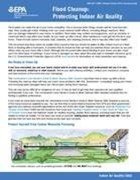
This fact sheet contains basic information on flood cleanup with illustrations and links to more detailed information.
Fact Sheet: Flood Cleanup - Protecting Indoor Air Quality (PDF)
Hazards in a Flooded Home
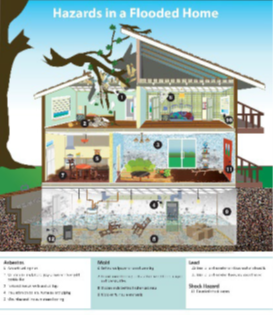
This infographic describes the hazards that are commonly found in a flooded home.
Hazards in a Flooded Home (PDF and text versions available)
Homeowner's and Renter's Guide to Mold Cleanup after Disasters
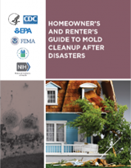
This document was developed by EPA, Department of Housing and Urban Development (HUD), Federal Emergency Management Agency (FEMA), National Institutes of Health (NIH), and the Centers for Disease Control and Prevention (CDC). It summarizes basic procedures for mold remediation after flooding and other disasters.
This guide is available as a PDF in two languages: English and Spanish
Flood Cleanup and the Air in Your Home: Booklet
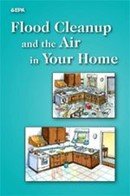
This easy-to-read booklet tells you how to clean up after a flood and how to prevent indoor air problems with helpful illustrations.
Note: This 28-page booklet prints in landscape as a 15-page printout. Please set your printer to landscape before printing.
The booklet is available as a PDF in English, Spanish, and Vietnamese.
Technical Resources for Flood Cleanup and IAQ
- Technical Report on Flood-Related Cleaning
- Mold: Worker and Employer Guide to Hazards and Recommended Controls
Technical Report on Flood-Related Cleaning
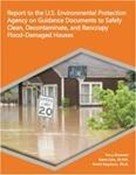
This document addresses strategies for safely returning flooded buildings to habitable conditions after a hurricane or other weather event. It is a technical summary of existing research and guidance on health hazards from floods, flood damage, and cleanup activities. EPA’s Indoor Environments Division commissioned the report; however, it does not necessarily represent EPA policy.
Mold: Worker and Employer Guide to Hazards and Recommended Controls
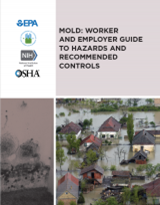
This document was developed by EPA, Department of Housing and Urban Development (HUD), National Institutes of Health (NIH), and the Occupational and Safety and Health Administration (OSHA). The document summarizes basic procedures for mold remediation after flooding and other disasters with an emphasis on worker protection.
Flood-Related Video Recordings
- Flood-Damaged Homes: Approaches to Effective Decontamination, Cleaning and Drying
Presented by Dr. Gene Cole - Flood Cleanup Webinar
Presented by Dr. Gene Cole
Flood-Damaged Homes: Approaches to Effective Decontamination, Cleaning and Drying
Presented by Dr. Gene Cole, this is a recording of the April 18, 2019, technical assistance webinar Flood-Damaged Homes: Approaches to Effective Decontamination, Cleaning and Drying featuring Dr. Gene Cole and hosted by EPA’s Indoor Environments Division. In this webinar, Dr. Cole discussed safe and effective methods for remediating and restoring flood-damaged homes, with special emphasis on antimicrobial use, best practices for cleaning and drying, mold testing, and what to look for if you need professional assistance.
Flood Cleanup Webinar
Presented by Dr. Gene Cole, this is a recording of the July 16, 2018, technical assistance webinar “Flood Cleanup” featuring Dr. Gene Cole and hosted by EPA’s Indoor Environments Division. Dr. Cole addressed many flood-related issues, including specific remediation requirements for various types of water damage; use of biocides and personal protective equipment; best methods to reduce health and safety risks; and how to determine when remediation is complete.
Wildfires and Indoor Air Quality
During a wildfire or prescribed fire, smoke in outdoor air can enter buildings and make the air indoors unhealthy. Fortunately, communities can take action to reduce levels of smoke and particulates indoors and preserve healthy indoor air quality.
In this section:
- Wildfires Resources One-Pager
- Create a Clean Room During a Wildfire
- Why is Coco Red?
- DIY Air Cleaner to Reduce Wildfire Smoke Indoors Infographic
- Wildfire Smoke: A Guide for Public Health Officials
- Wildfire Guide Factsheets
- Wildfire-Related Video Recording
Wildfires Resources One-Pager
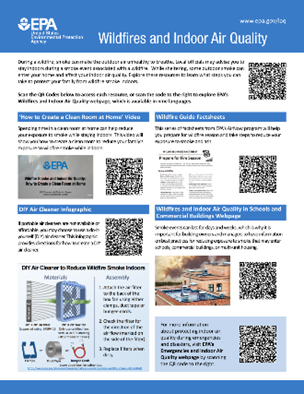
This one-pager has QR codes to several Wildfire and Indoor Air Quality resources – including guidance for making a DIY air cleaner, how to create a clean room in your home, and guidance for schools and commercial buildings during wildfire smoke events. Simply scan the QR codes to access the resources.
Create a Clean Room During a Wildfire
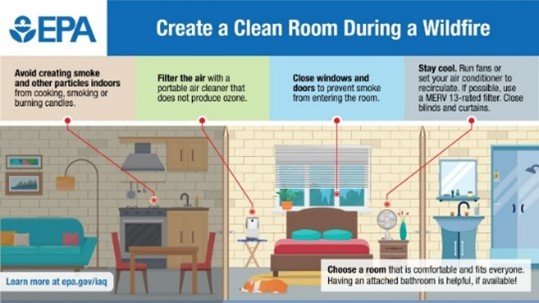
Learn the steps you can take to create a clean room during a wildfire.
Create a Clean Room During a Wildfire (PDF and text versions available)
Why is Coco Red?

Coco and his friends experience an air quality adventure. Read how Coco, his little sister and his friends solve a mystery as they learn about how wildfires can affect air quality and health. This book is for all children, especially those with asthma, and their caretakers.
- Why is Coco Red? (available in several languages)
- Watch the Video on YouTube | En Español
DIY Air Cleaner to Reduce Wildfire Smoke Indoors Infographic
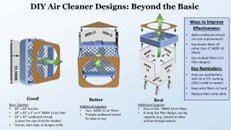
Learn the steps you can take to create a do-it-yourself (DIY) air cleaner in an emergency, if portable air cleaners are not available or affordable.
This infographic is available as a downloadable version and a text version.
Wildfire Smoke: A Guide for Public Health Officials
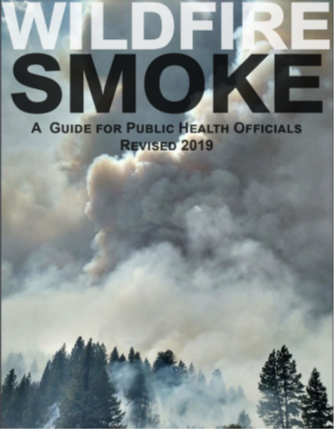
This guide is designed to help local public health officials prepare for smoke events, to take measures to protect the public when smoke is present and communicate with the public about wildfire smoke and health.
Wildfire Guide Factsheets
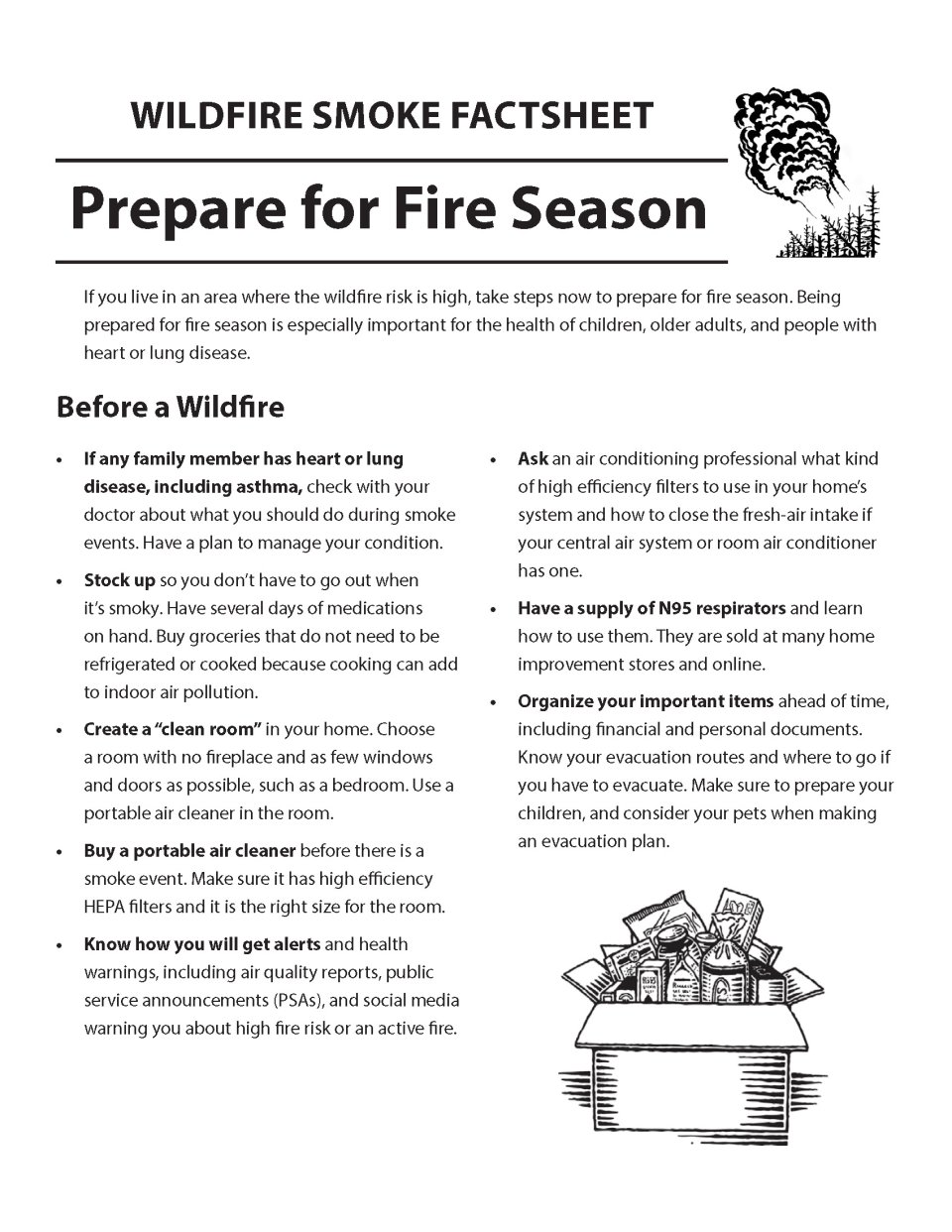
A series of Wildfire Guide Factsheets are designed to help the public prepare for smoke events, and are available in a variety of topics:
- Prepare for Fire Season (PDF)
- Reduce Your Smoke Exposure (PDF)
- At-Risk Groups of People (PDF)
- Children’s Health and Wildfires: A Resource for Families (PDF)
- Protect Your Lungs from Wildfire Smoke or Ash (PDF)
- How to Create a Clean Room at Home (PDF)
- Indoor Air Filtration (PDF)
- Coping with the Stress of Wildfire Smoke (PDF)
- Protect Yourself from Smoke and Extreme Heat (PDF)
- Using Air Quality Sensors for Smoke (PDF)
- Protect Your Pets from Wildfire Smoke (PDF)
- Protect Your Large Animals and Livestock from Wildfire Smoke (PDF)
- Protect Yourself from Ash (PDF)
- Protect Yourself from Smoke and Extreme Heat (PDF)
Wildfire-Related Video Recording
Wildfire Smoke and Indoor Air Quality: How to Create a Clean Room at Home
Learn about the impact of wildfire smoke on indoor air quality and the steps you can take to create a clean room during a wildfire.
Power Outages and Indoor Air Quality
Power outages that last longer than a few hours can adversely impact IAQ. Individuals can take action to prevent the buildup of harmful indoor pollutants, including deadly carbon monoxide.
In this section:
- Power Outages Resources One-Pager
- Where to Safely Use a Fuel-Powered Portable Generator
- Power Outage-Related Video Recordings
Power Outages Resources One-Pager

This one-pager has QR codes to several Power Outages and Indoor Air Quality resources – including information on safely using fuel-powered portable generators, ventilation, carbon monoxide detectors and more. Simply scan the QR codes to access the resources.
Where to Safely Use a Fuel-Powered Portable Generator

This downloadable and printable PDF shows where to safely place and use a fuel-powered portable generator outside your home.
Where to Safely Use a Fuel-Powered Portable Generator (PDF and text versions available)
Power Outage-Related Video Recordings
Video: Power Outages and Indoor Air Quality
This video demonstrates how to protect your indoor air quality during a power outage, including how to prevent the buildup of harmful indoor pollutants, safely use a fuel-powered portable generator, and maintain indoor temperatures.
